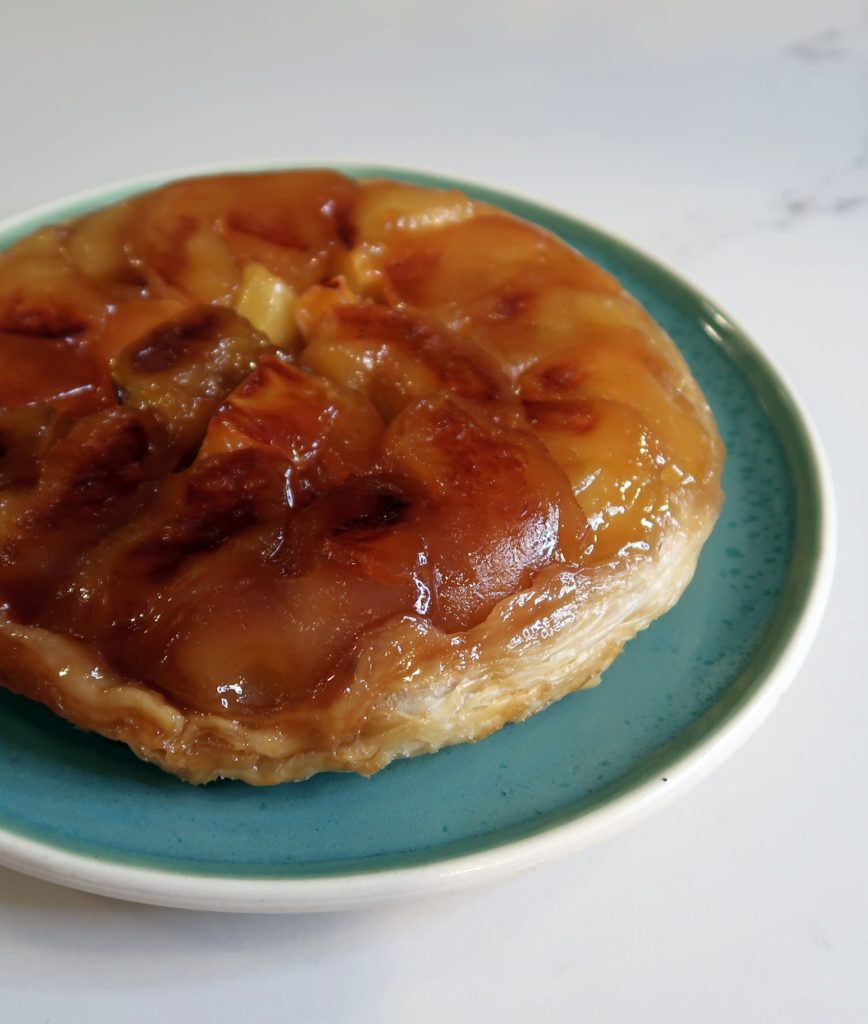
There were negative things about the French colonial period in Vietnam but also positives, especially in the realm of cooking. Vietnamese cuisine gleans, combines and fuses foreign ideas well. Witness the banh mi. But also note the number of Viet bakeries with French names like Givral and Le Croissant Doré.
French pastries are part of the Viet experience, and I grew up snacking on homemade cream puffs and savory puff pastries. I made French-style tarts before I ever baked an American pie. There are cute tart pans in my collection, but what I love about apple tart Tatin is its simplicity. For years, I assumed that the iconic French tart invented by the Tatin sisters in the 1880s was difficult to achieve, but then a French-trained pastry chef and friend, Christophe Lillienfeld, showed me how easy it is to master.
Christophe and his wife, Maki Tsuzuki (also a pastry chef), owned a copper tart Tatin pan purchased from France. The pan’s high, slightly sloping sides yields a handsome tart. Christophe said the copper yielded a special color during cooking too.
However, on the day we made one together, we used an All-Clad stainless steel skillet. We drank champagne, used grocery store pastry and picked apples from Maki’s family tree. The tart was utterly delicious, with apples cooked to a tender pillowy texture and a delicate crust to support the sweet fruit.
I’ve made this tart many times over the years, but realize that caramelizing sugar and flipping it over can challenge. For this recipe, I scaled things down by using a smaller skillet. You can serve four from this beginner’s apple tart Tatin recipe. It’s unfussy but there’s strategy involved. Here are my tips plus a video to get you on your way!
Apple Matters
Use high-pectin apples for tart Tatin. You may use many kinds of apples (Gala and Fuji, for example), though a tart-sweet apple offers a decent amount of pectin to yield a slightly glossy, gelatin-like finish. The pectin also sandwiches the ingredients together to produce a gorgeous tart. Green apples, including unripe ones, tend to have high pectin.
Originally, the Tatin sisters used the Reine de Reinettes Pipin (King of the Pippins). Check farmer’s markets for apples. I used a combination of locally grown heirloom apples, including Black Twig and Mutsu. These were part of the ugly apple bin, but they’re beauties to me!
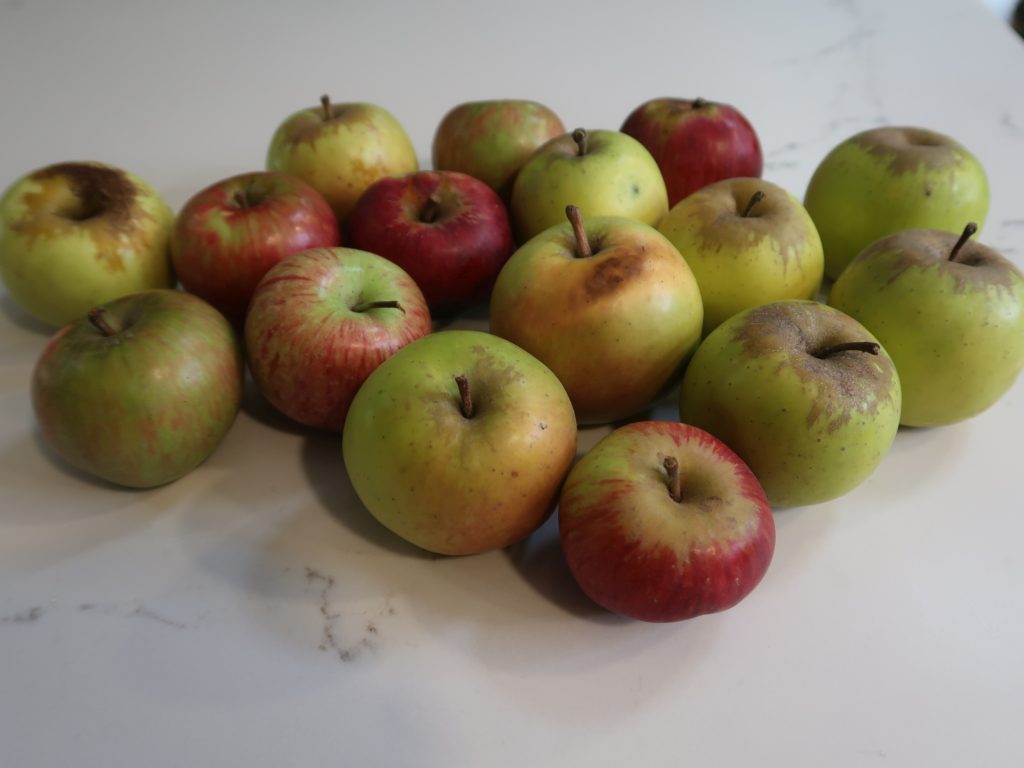
What size and how many apples to use? Medium or small ones are what I prefer. There’s an estimate in the recipe here. That said, you may fill the skillet with apples then add one more, for emergency. It’s amazing how many apples can go into the skillet. Slide in as many as you can.
Pastry Issues
Puff pastry or short crust pie dough (pate brisee) can be used for tart Tatin. If you’re up to making your own, go for it. Have leftover pastry? You only need 6 to 8 ounces for this recipe — enough for a single crust pie. The other ingredients are butter and sugar!
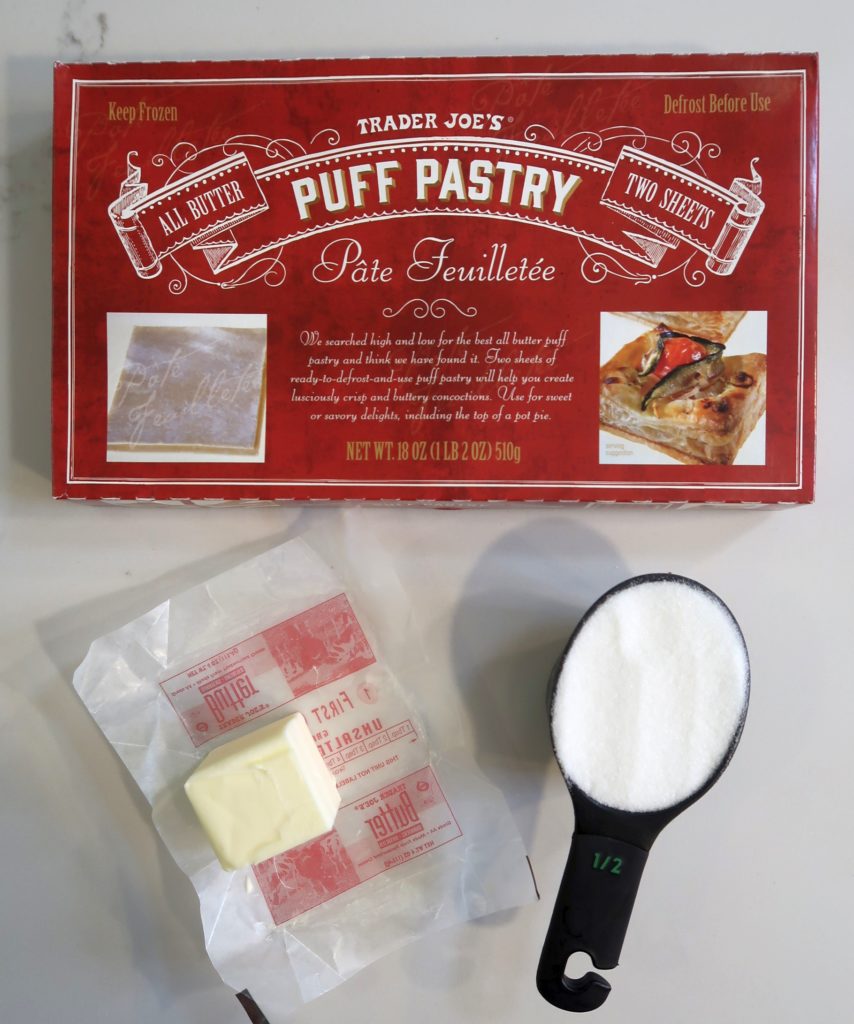
I had frozen Trader Joe’s puff pastry to use up. Pepperidge Farms is terrific and easy to buy too. For your first try at tart Tatin, focus on cooking the apples and unmolding. Let the pastry be secondary. Step up to using homemade for a future one.
Icing Down
Many tart Tatin recipes have you invert the warm tart onto a serving plate or rack. A lot of juices drip. What Christophe showed me was genius — arrest the cooking process with an ice bath, of sorts. It sets things for a beautiful, solid finish.
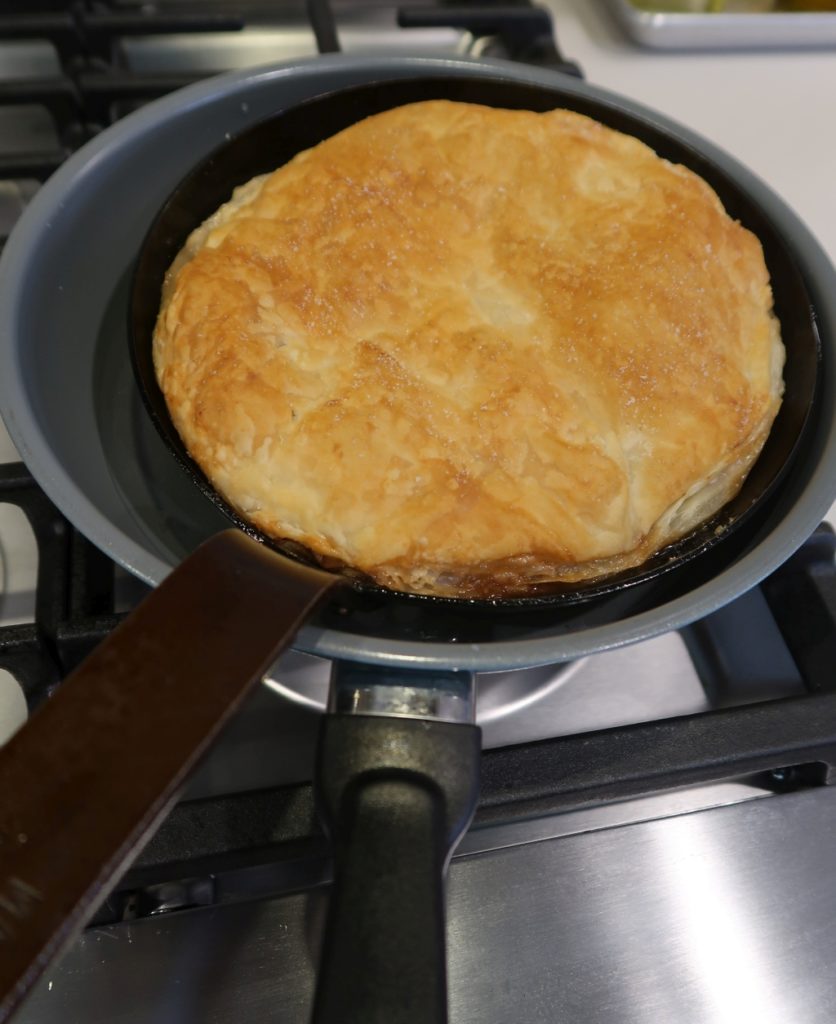
Unmolding tips
First off, choose the pan wisely. I used a well-seasoned French carbon steel 8-inch skillet for the one in this post; Mauviel, Debuyer and Made-In make good ones. Choose a pan whose shape comes close to that of a tart Tatin pan. Cast iron, stainless steel, or an oven safe ceramic coated nonstick skillet are all candidates too. The pan needs to go from stove to oven.
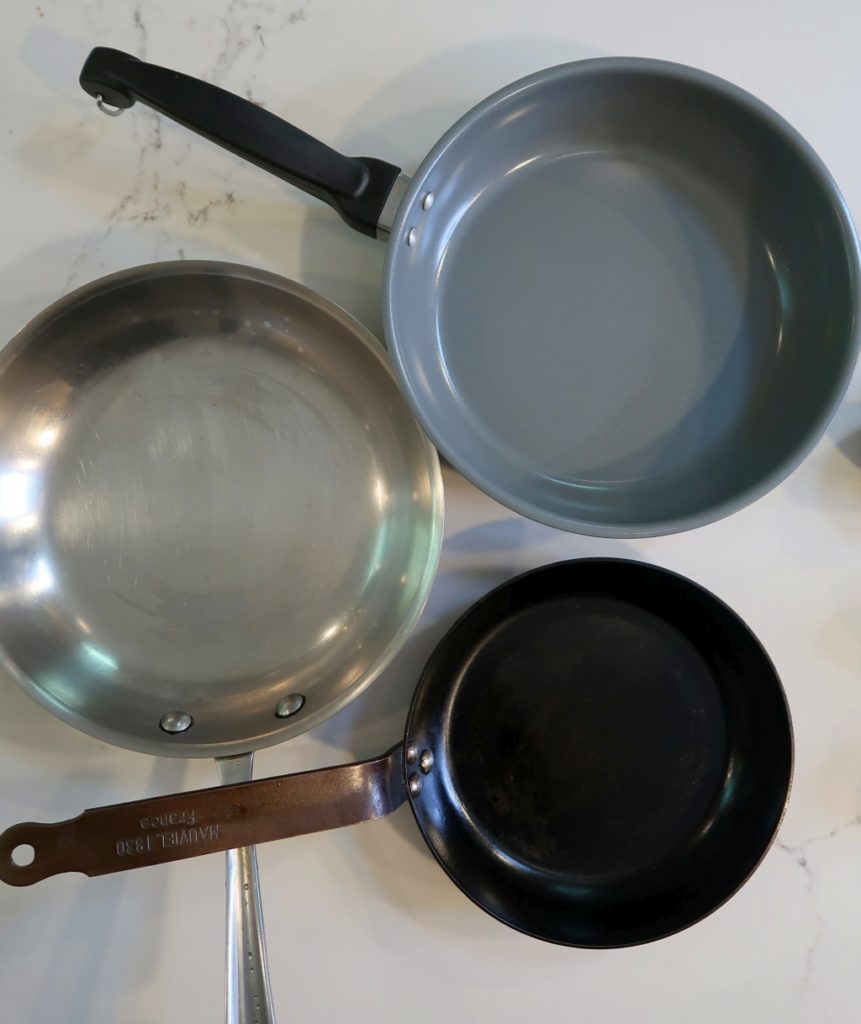
I prefer to unmold tarte Tatin close to serving time. When done too far in advance, the pastry turns chewy and unremarkable.
And in the process of unmolding, don’t be afraid to do last minute arranging. Sometimes pieces of apple stick to the pan. No problem. Get a knife to retrieve and place it into the tart like as if you’re finishing a jigsaw puzzle.
The important thing is that you do your surgical procedures when the ingredients are somewhat warm so they’ll stick together and look like you meant it. Your guests will NEVER know and they will love you for making them a wonderful sweet treat.
Apple Tart Tatin Video
To help you move to success, I made this video. It’s meant to go with the recipe below so watch it, then cook!
If you have problems seeing the video, refresh your browser or switch to a different browser. I’m on a PC and use Chrome and Edge. I browse via Safari on my iPhone. In those instances, the video is visible. If you use an ad-blocker, you may need to disable it to see the video.
Once you’re on firm tart Tatin ground, scale up to a 10-inch skillet by doubling the butter, sugar, and apple. You’ll obviously need a bit more pastry too! Have fun.
Gluten-Free or Vegan Tart Tatin?
Of course! Experiment with a favorite gluten-free pastry dough. Use vegan butter or virgin coconut oil instead of butter. While I’ve never tried these approaches, I don’t see why they wouldn’t work.
Many people are trying to cut back on sugar these days. I understand. I’m not familiar with the various substitutes. If you have experience in that realm, please weigh in! Thanks and enjoy.
Related Posts
Beginner’s Apple Tart Tatin
Ingredients
- 1 ½ to 1 ¾ pounds tart-sweet apples , peeled, cored, and quartered
- 6 to 8 ounces piecrust dough or puff pastry, thawed if needed
- 4 tablespoon (½ stick, 2 ounces) unsalted butter
- ½ cup (3.5 oz) plus 1 teaspoon sugar
Instructions
- Preheat the oven to 350 degrees with a rack in the middle position. Select an oven-safe 8-inch skillet to make the tart.
- On a lightly floured surface, roll out or unfold the dough to a thickness of roughly ⅛ inch. Invert the skillet over the dough and cut a dough round so it extends between the skillet rim by about ½ inch. Transfer the dough to a parchment paper lined baking sheet and refrigerate, uncovered.
- Put the butter and sugar in the skillet and heat over medium. When the butter and sugar have melted (you see lots of liquid), reduce the heat to medium-low. Start adding in the apples, cut side down, around the skillet’s edge. Let them touch and hug tightly because they’ll soften and shrink later. Arrange smallish pieces in the center. If needed, cut bigger pieces to fit. You may not use all the apple pieces at this point.
- Let bubble and cook for 25 to 30 minutes. Expect little action at the beginning. As the apples soften, slide more apple pieces into openings that you spot. Aim to use all the apple pieces. Don’t forget the center pieces. It’s okay to slide raw pieces under cooked ones in the center.
- Expect the liquidy part to bubble and thicken during cooking. When liquid is caramelizing -- the center liquid is orange-honey -- remove the skillet from the heat.
- After bubbling calms down, place the pastry on top. Use a knife tip to push the edge down and around the apples.
- Bake for 20 minutes, or until the pastry is golden brown. During the last few minutes, fill a medium (10-inch) skillet with ice. When the tart is done, set the skillet on top of the ice to quickly cool. Once all the ice has melted, remove the tart skillet and set aside until you’re ready to serve, at least 20 minutes before serving.
- To unmold, gently warm the tart skillet over low heat. After 6 to 8 minutes, when you can hear a very faint hiss, turn off the heat. Put a serving plate over the skillet, then bravely invert to unmold. Cut into wedges and serve.













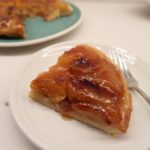
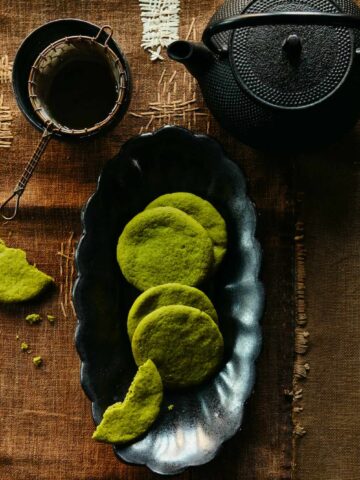
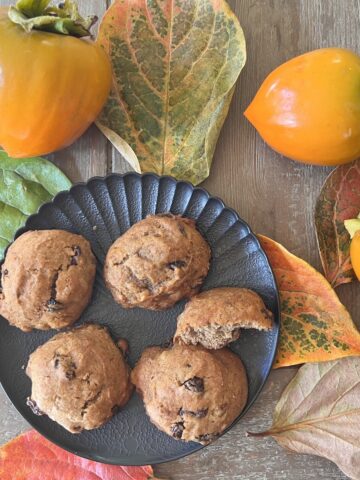
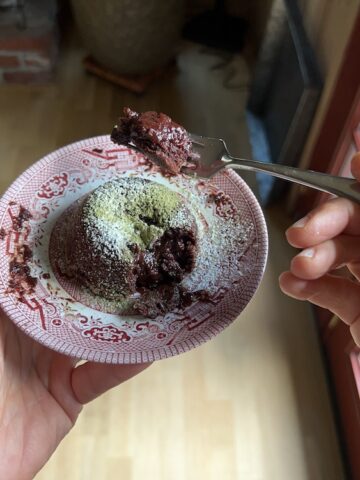

FHPerkins says
You inspired me to make this tonight. You and Patricia Wells have probably got more than one thing in common but one thing I know is the way you both make a Tarte Tatin. I like the extra bit of advice about waiting until almost ready to serve to flip it out of its pan. The crust really does get leathery if it sits around too long. Heating it up and listening for a sizzle a great hack. Thank You. It came out great and made my finicky Italian husband happy. Tarte Tatin has that effect.
Andrea Nguyen says
Wow! That's quite a compliment. Leathery is such an apt term for the yucky state that the crust is in when the tart sits for too long.
And your husband was impressed. I'm totally honored. Thank you!
Kaori Becker says
Awesome!! I've been wanting to make this :)!!
Andrea Nguyen says
Cool, Kaori. I hope you like it. It's fun and well, fantastic to eat too!
Paul Larson says
Thanks. My apple corer/ peeler also sliced the apples which was ok. But the liquid didn’t thicken quite enough. I’m thinking it needed a bit longer on the stovetop. Next time. But the tart tastes quite lovely and unmoulded perfectly thanks to your instructions.
Andrea Nguyen says
Paul, you have quite a kitchen helper there. Yes, cook the apples longer next time. It seems like you're hooked, which is fantastic! It's a fun recipe to play with and perfect.